New Staff Members and Fellows
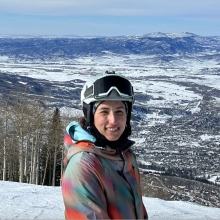
Nedaa-Alexandra Asbah
I am heavily involved in top-related measurements and searches in multi-lepton final states and started my 2-year mandate as convener of the ATLAS top physics group in October. On non analysis side, I plan to join the (fast) detector simulation activities in the CERN team and also get involved with the ongoing LAr R&D efforts for Future Circular Collider (FCC).
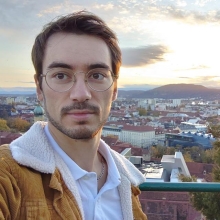
Adrien Campredon
I’m a 24 years old French engineer, I’ve joined CERN last September, after a short experience in satellites thermal analysis. As part of EP-ADE-TK group, I am working as Mechanical/Thermal Engineer on ATLAS Inner Tracker, for the High Luminosity upgrade. I am responsible of the mechanical design and thermal simulations of BCM prime, the new version of the Beam Condition Monitor, which will be used to measure luminosity during future LHC runs. I will also be helping on mechanical aspects of ITk services and Detector Control System. I’m excited about meeting people from worldwide and learning a lot, and I hope to have the opportunity to link my work at CERN with my passion for aerospace and astrophysics.
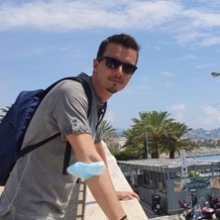
Gabriele Ciarpi
I've recently joined the EP-ESE-ME section as a research fellow, focusing on the EP-R&D project concerning future high-speed links. My work involves designing radiation-hard output drivers capable of achieving speeds up to 25.6 Gb/s for both electrical and optical communication. These drivers will be integrated into a single chip using 28 nm technology. Utilizing wavelength division multiplexing, they will enable the demonstration of a 100 Gb/s data link over a single fiber in a high-radiation environment.

Riccardo Di Maio
I'm Riccardo, and I joined CERN in January 2024 as a software engineer on the Origin program. I am part of the EP-ADP-CO team, working on Rucio, an open-source scientific data management software. Before CERN, I was working at Amazon Web Services in Dublin as a system development engineer, focusing on network automation and scaling.

Bartosz Dziedzic
I am a new experienced project graduate (QUEST) in the EP-ADO group, working for LUCID and ZDC detectors. During technical stops I will work mostly on service and maintenance of the mentioned detectors. During beam operation I will be focused on development of the TDAQ and DCS software and I will take a part in the data-taking. I obtained my PhD in particle physics from the Niewodniczanski Institute of Nuclear Physics Polish Academy of Sciences in April 2022. My PhD thesis covered measurement of the beam-induced background using ATLAS/ALFA detectors at crystal and amorphous collimation schemes. During my PhD I was responsible for service, maintenance and operation of the ALFA detector.
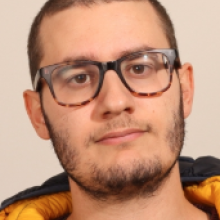
Mattia Faggin
During my Research Fellow at CERN I’ll work as data analyst and software developer within the team of ALICE (A Large Ion Collider Experiment). The main goal of my research is the comprehension of the properties of the strong interaction and of the quark-gluon plasma (QGP), which I’ll try to investigate by measuring the production of charm baryons in ultra-relativistic pp and Pb-Pb collisions, respectively. I’ll also actively contribute to the data reconstruction and preparation for physics analyses, as well as to the development of new reconstruction and simulation tools for future upgrade projects.

Nicolò Ghielmetti
Nicolò Ghielmetti is Computer Science Engineer who will work as an Early Career Professional on 'Edge SpAIce' project. The project, supervised by Sioni Paris Summers and Maurizio Pierini, consists of exploiting hls4ml to implement a neural network for image segmentation on FPGA equipped in a CubeSat. Through the acquisition of satellite images of the hydrosphere, the neural network will identify possible islands of pollution and notify authorities on Earth. The engineering objective is to optimise an inference figure of merit composed by watts per images per second, thus balancing power consumption with prediction speed.
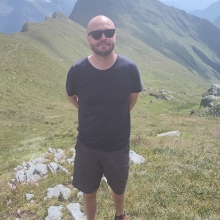
Ola Slettevoll GROETTVIK
I joined EP as a Staff in February 2024, 3 years after I started my senior fellow contract. In this new role, my focus has shifted slightly. While I'll continue contributing to the ALICE ITS detector, my main attention will be on the ITS3 upgrade - a bent stitched MAPS-based vertex detector. This involves working on the MOSAIX chip design and contributing to the test system development. In addition, I am one of the conveners of the ITS3 work package responsible for off-detector service electronics.
Jaana Heikkilä
I am a Finnish experimental physicist at the CMS experiment, and I joined the EP-CMG group as a Senior Research Fellow in January 2024. I earned my PhD in 2019 from the University of Helsinki, after which I spent 4 years as a postdoc at the University of Zürich. Over my decade-long career, I have focused on measuring the properties of the Standard Model Higgs boson and searching for new physics predicted by Supersymmetry. I have also actively contributed to the development and operation of the CMS L1 Trigger. I will continue uncovering possible hiding spots of New Physics by targeting final states with multiple low-pT objects (electrons, muons, and jets), and improve the trigger algorithms envisioned for Run 3 and the Phase-2 era of LHC to increase sensitivity towards such final states.

Eric Hunter
Greetings from the control room. If the beam is off, you are welcome to stop by with your questions and concerns about antimatter plasma. I started at CERN in 2017 developing plasma based diagnostics for ALPHA. I am now a Research Fellow, TC and EXSO for ASACUSA. This year we plan to make the world's brightest antihydrogen beam—rates as high as 1 atom per second are within reach.
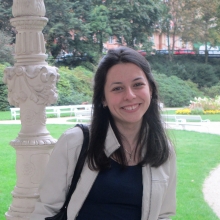
Simona Ilieva
In August 2023 I joined the EP department at CERN as a research fellow in applied physics. Currently I serve as a software coordinator for the SND@LHC experiment, where we study neutrinos produced in LHCproton-proton collisions. My activities include detector calibration and performance evaluation, modeling the detector response, and maintaining the software stack. On the physics side, I am responsible for the muon flux estimation, which constrains the background for the muon neutrino search. My team and I work with the SY-STI group, mutually improving our understanding of the LHC beam losses. While at CERN, I look forward to establishing new contacts with colleagues interested in neutrino physics and computing.
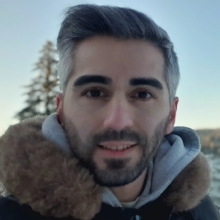
Ahmet Lale
My name is Ahmet LALE. I am part of the EP-DT group and the modules work package of the EP R&D program. I primarily focus on R&D for interconnections between electronic chips and modules, aiming to achieve reliable and reproducible connections for future silicon detectors. Previously, I was as a project manager at a multinational company, where I developed microsensors (MEMS accelerometers and gyroscopes) for cutting-edge defense and space applications. Before that, I earned a doctorate in micro/nano sensor technology for healthcare applications and led a technology transfer project. I am thrilled to have the opportunity to contribute my skills and experience at CERN.
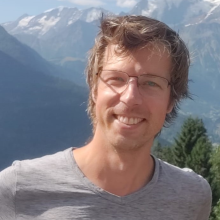
Janko Nauta
I am a CERN Research Fellow involved in the ALPHA experiment at the Antiproton Decelerator facility. At ALPHA, we produce and trap antihydrogen atoms to compare them with their matter counterpart, hydrogen. As a postdoc at this experiment, I have been responsible for improving the precision of the laser system for antihydrogen spectroscopy to 15 digits, by implementing a state-of-the-art Cs fountain clock. We also performed a measurement of the influence of gravity on antihydrogen atoms, which was the first of its kind. As a Fellow, I plan to measure new energy levels in antihydrogen, which will enable the determination of the antiproton charge radius for the first time.
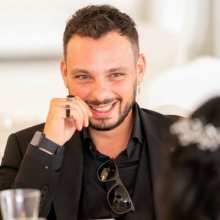
Renato Quagliani
I am delighted to join the EP-LBD group as a Research Physicist(LD). I obtained my PhD in a cotutelle programme between Paris-Sud and Bristol University. After my PhD, I spent six years as post-doc at the Sorbonne University first and EPFL afterwards. In this period, I studied properties of rare b-hadrons decay and developed few of the track reconstruction algorithms used in the on-going LHCb Run3 data taking. As new member of the EP-LBD group, I will keep hunting for NP studying rare b-hadrons decay while addressing challenges that the LHCb Upgrade2 programme comes with concerning event reconstruction.
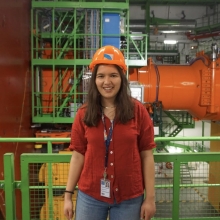
Beatriz Ribeiro Lopes
I’m Beatriz, a new Research Fellow with the CMS experiment. I have been a member of CMS since 2018, and joined CERN in January 2024. Here, I will be working on a measurement of Higgs bosons decaying to pairs of b and c quarks, in final states with two very large radius jets. Previously, I have worked on top quark physics, mainly studying top quark production in association with a photon. I am also the contact person in the TOP group for the Higgs Combination Tool, the statistics software used by most analyses in CMS. During my time at CERN, I will also contribute to the upgrade of CMS for the High Luminosity LHC, by performing calibrations of time-of-arrival measurements in the High Granularity Calorimeter.I am excited to start these new projects and learn from my excellent colleagues at CERN.

Sergio Sanchez Cruz
I am an experimental physicist and have recently joined CERN as a research fellow, following my PhD at the University of Oviedo and a postdoc at the University of Zurich. I am part of the CMS Collaboration, where I specialize in the study of the top quark and the Higgs boson as BSM physics probes. Currently, I serve as the top quark EFT group convener in CMS. My research also involves muon reconstruction activities, where I have served as the muon object group convener, and will contribute to the Phase-2 upgrade of the CMS Level 1 trigger during my fellowship.
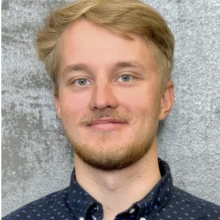
Eino Johannes Tiirinen
I recently joined the Atlas Detector Operation group to work for EP R&D (ORIGIN program). Previously, I have been at CERN as a Technical Student in TE-VSC. After having studied HL-LHC beam screen surface coatings during the Tehcnical Studentship, now my efforts are centered around an innovative superconducting magnet design that could replace the current M1 and H8 Morphugo magnets in the CERN North Area. This technology demonstrator is named the Split Coil Solenoid Demonstrator and it should provide a cost-effective solution to replace the aging normal conducting magnets by incorporating novel quench detection and -protection solutions.
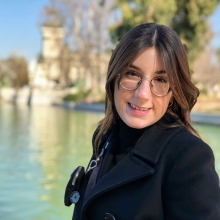
Nuria Valls Canuda
I'm Nuria, and I became part of the CERN team in December 2023, right after finishing my PhD at La Salle University in Barcelona. I'm a reconstruction and simulation developer for PicoCal, the new electromagnetic calorimeter detector designed for the LHCb Upgrade II. Working with PicoCal presents many new challenges, since it will provide longitudinal segmentation and a precise time measurement in each readout cell. Hence, developing a new clustering algorithm is crucial to fully exploit its particle identification capabilities. Apart from that, I've also joined the efforts to speed-up and migrate the current stand-alone simulation of the PicoCal to the LHCb software.
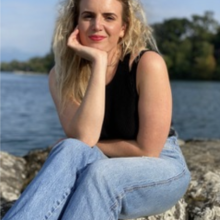
Milou Van Rijnbach
I'm Milou, currently working as a fellow at the EP-ADE-TK group. Before starting this role in January, I worked as a doctoral student in the same group on the monolithic CMOS sensor "MALTA", in addition to my activities in the EP R&D W.P 1.3 on Module Development. My current focus lies with the module production for ATLAS ITk. My work involves the assembly and testing of modules to be integrated into the ATLAS ITk. Given the large scale of this endeavour, I'm responsible for ensuring scalability, automation, and streamlining of the processes involved.
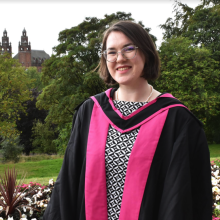
Morag Williams
I am a detector physicist focused on characterizing novel hybrid pixel detectors. Since January 2024, I started a 'Quest' fellowship in EP R&D WP 1.1 and LHCb looking into 3D column silicon sensors for fast timing applications. During my PhD, I tested the small-pitch CLICpix2 readout ASICs bump-bonded to planar sensors, in both laboratory and test-beam environments. I was also a key developer of the Corryvreckan framework for test-beam data reconstruction. Afterwards, I developed hybrid detectors with Cd(Zn)Te sensors and novel readout architecture for X-ray detection at the ESRF.
